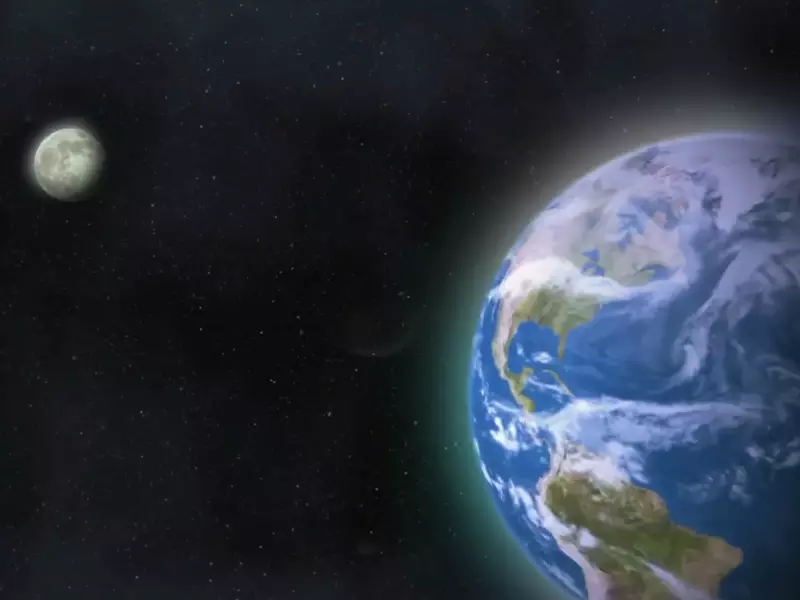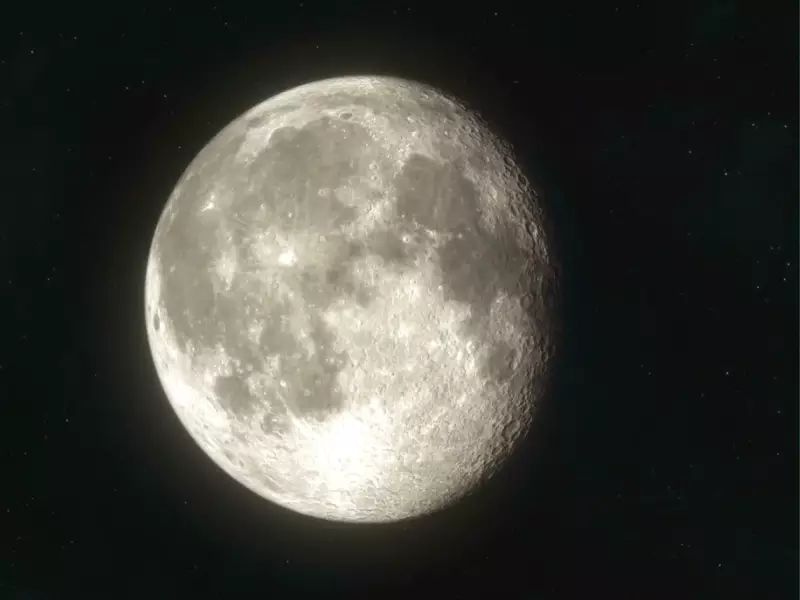The Moon has always been a source of wonder and mystery to humanity, serving as Earth’s closest celestial neighbor and a key player in the drama of the cosmos. It lights up our night skies, influences the tides, and has been the subject of countless myths and legends throughout human history. Its presence and proximity to Earth make it an essential part of our daily lives, even if we are not always conscious of its effects.
The relationship between the Moon and Earth is a complex interplay of gravitational forces, tidal interactions, and shared histories that have shaped the environments and life on our planet. The Moon’s gravitational pull creates the tides, stabilizes Earth’s tilt and climate, and has influenced the evolution of life. This bond has not only practical implications for our planet but also offers valuable insights into the formation and development of celestial bodies in our solar system.
Delving deeper, the Earth-Moon system is a unique duo in our solar system, characterized by its specific formation, physical characteristics, and mutual influences that have been studied extensively by scientists and astronomers. The Moon’s surface, marked by craters and basins, tells a story of a shared past, while its influence on Earth extends beyond the physical to the cultural and emotional realms, shaping human behavior, culture, and exploration.

Historical Perspectives
Early Theories
Long before the advent of modern astronomy, civilizations across the globe looked up at the night sky with wonder, crafting myths and legends around the Moon and its influence on Earth. These early theories were deeply rooted in ancient beliefs, attributing divine or supernatural powers to the Moon. For example, many cultures viewed the Moon as a deity or a powerful force capable of controlling various aspects of life and the environment, including fertility cycles, weather patterns, and the seas.
Ancient Beliefs and Theories
The ancient Greeks, for instance, identified the Moon with the goddess Selene, while in Roman mythology, Luna held a similar role. These deities were thought to have direct impacts on human affairs and natural phenomena. Similarly, ancient Chinese philosophers considered the Moon as a yin counterpart to the sun’s yang, symbolizing balance and harmony in the universe.
Modern Understandings
The transition from mythological interpretations to scientific explanations of the Moon’s role in relation to Earth began with the Renaissance. This period marked a shift towards observation, measurement, and the questioning of ancient texts.
From Galileo to Apollo Missions
Galileo Galilei played a pivotal role in this transformation. In 1609, with his improved telescope, Galileo made groundbreaking observations of the Moon, noting its rugged terrain and mountains, challenging the prevailing belief that celestial bodies were perfect spheres. These discoveries laid the foundation for astronomical science, gradually leading to a deeper understanding of the Moon’s physical characteristics and its gravitational relationship with Earth.
The Apollo missions of the 1960s and 1970s marked the culmination of humanity’s quest to understand the Moon. These missions not only provided the first direct human observations and samples from the Moon’s surface but also offered invaluable data about its formation, composition, and the nature of its orbit around Earth.
Physical Characteristics
Earth’s Companion
Size and Distance
The Moon, Earth’s only natural satellite, presents a fascinating study in contrasts and similarities. With a diameter of about 3,475 kilometers, it is significantly smaller than Earth. Yet, its proximity—averaging about 384,400 kilometers away—makes it a prominent feature in our night sky and a significant influence on our planet.
Composition and Surface
The Moon’s surface is covered in a fine, powdery dust and is characterized by a vast number of craters, mountains, and maria (large, dark, basaltic plains formed by ancient volcanic eruptions). Its composition reveals a lack of significant water or atmosphere, offering a stark contrast to the Earth’s rich and dynamic environment.
Unique Features
Lunar Phases
The lunar phases—the cycle from new Moon to full Moon and back—result from the interplay of the Moon’s orbit around Earth and the sunlight reflecting off its surface. These phases have fascinated humans for millennia, serving as a calendar for ancient civilizations and continuing to captivate the interest of modern society.
Eclipses and Tides
Lunar and solar eclipses occur due to the precise alignment of the Earth, Moon, and Sun. These celestial events have not only been key to understanding the Earth-Moon-Sun relationship but also to verifying fundamental aspects of physics, like Einstein’s theory of general relativity.
The Moon’s gravitational pull is also responsible for the tides on Earth. The rise and fall of sea levels have been critical for maritime navigation, coastal ecology, and human settlement patterns.
Gravitational Bond
Tidal Forces
The gravitational interaction between the Moon and Earth is most visibly manifested through tidal forces. These forces create two bulges on Earth—one where the Moon’s gravity is strongest and one on the opposite side, due to the inertia of water opposing the Moon’s pull. As Earth rotates, these bulges result in high and low tides, essential for the health of marine ecosystems.
Tidal Locking Phenomenon
The Moon is tidally locked to Earth, meaning it rotates on its axis in exactly the same time it takes to orbit Earth. This synchronization causes the same side of the Moon to always face Earth, a direct result of the gravitational forces acting between the two.
Lunar Orbit
Elliptical Path Explanation
The Moon’s orbit around Earth is not a perfect circle but an ellipse. This elliptical orbit causes the Moon to be closer to Earth at some points (perigee) and farther away at others (apogee), affecting the strength of its gravitational pull and, consequently, the magnitude of tides.
Synchronous Rotation
Synchronous rotation ensures that the Moon keeps the same face towards Earth. This unique feature is a direct outcome of tidal forces over billions of years, gradually bringing the Moon’s rotation into sync with its orbit around Earth, showcasing the enduring and dynamic relationship between these two celestial bodies.

Moon’s Influence on Earth
Ecological Impact
Tides and Biological Cycles
The Moon exerts a significant influence on Earth beyond its nightly glow. Tidal forces, generated by the Moon’s gravitational pull, play a crucial role in Earth’s ecological systems. The rise and fall of ocean tides affect coastal environments and marine life, influencing feeding patterns, mating rituals, and migration paths of numerous species. These natural rhythms, dictated by the lunar cycle, underscore the deep ecological connection between the Moon and Earth.
Cultural Impact
Calendar Development
The Moon’s phases have served as a natural calendar for humans throughout history. Ancient civilizations, understanding the regularity of the lunar cycle, aligned their months and festivals with the phases of the Moon. This lunar calendar system facilitated the planning of agricultural activities, religious ceremonies, and social events, embedding the Moon’s cycle into the fabric of human culture.
Mythology and Folklore
The Moon has been a source of inspiration and wonder, deeply ingrained in the mythology and folklore of various cultures around the world. From being revered as a deity in ancient civilizations to its role as a symbol of romance and mystery in literature and arts, the Moon’s cultural significance transcends its physical presence in the sky. These stories and beliefs reflect humanity’s enduring fascination with the Moon and its perceived powers.
Scientific Missions
Exploration Timeline
Historic and Recent Missions
The journey to understand the Moon has evolved significantly over the centuries. The Apollo missions in the late 1960s and early 1970s marked the first time humans set foot on the Moon, providing a wealth of information about its surface and composition. Since then, various missions by NASA, ESA (European Space Agency), and other space agencies have continued to explore the Moon, utilizing advanced technology to probe its mysteries from orbit and on the surface.
Discoveries and Studies
Water Ice and Mineral Resources
Recent missions have made groundbreaking discoveries, including the presence of water ice in permanently shadowed craters at the Moon’s poles. This finding has profound implications for future lunar exploration and the potential for human settlement, as water is a critical resource for life support and fuel. Additionally, studies of the Moon’s mineral resources have revealed the presence of elements that could be mined for use on Earth and in space, opening new avenues for exploration and utilization.
Geological Activity Evidence
Evidence of past geological activity on the Moon, such as ancient volcanic eruptions and tectonic movement, challenges previous perceptions of the Moon as a geologically dead world. These discoveries provide clues about the Moon’s formation and its dynamic history, offering insights into the early solar system.
Future Endeavors
Lunar Exploration
Upcoming Missions and Goals
The future of lunar exploration is bright, with ambitious missions planned by various countries and private entities. Objectives include the establishment of permanent human bases, in-depth geological studies, and the search for resources that could support long-term human presence and deep space exploration. These endeavors aim not only to advance our understanding of the Moon but also to develop technologies and capabilities for missions beyond, including to Mars and beyond.
Earth-Moon System
Potential for Space Exploration Base
The concept of using the Moon as a space exploration base is gaining traction. Its proximity to Earth makes it an ideal launchpad for missions deeper into the solar system. Establishing a base on the Moon could provide valuable experience in living and working in space, testing life support systems, and utilizing local resources in a relatively low-risk environment. The Earth-Moon system thus represents not just a topic of scientific inquiry but a stepping stone for the future of human exploration in space.
Frequently Asked Questions
How does the Moon affect Earth’s tides?
The Moon’s gravitational pull generates tidal forces that cause Earth’s oceans to bulge out on the side closest to the Moon and on the side farthest from the Moon, creating high tides. As the Earth rotates, different areas align with these bulges, experiencing high and low tides. This cyclic movement is crucial for marine ecosystems and human coastal activities.
What is tidal locking?
Tidal locking is a phenomenon where the Moon’s rotational period matches its orbital period around Earth, causing the same side of the Moon to always face Earth. This occurs due to the gravitational interaction between the Earth and Moon, leading to a stable orientation of the Moon relative to Earth over millions of years.
Why are there different phases of the Moon?
The phases of the Moon result from its orbit around Earth, changing the portion of the Moon illuminated by the Sun that we can see from Earth. These phases range from new Moon, when the Moon is between Earth and the Sun, to full Moon, when Earth is between the Sun and the Moon, and include various crescent and gibbous phases in between.
How did the Moon form?
The prevailing theory is the giant-impact hypothesis, which suggests that the Moon formed from the debris left over after a Mars-sized body collided with Earth about 4.5 billion years ago. This catastrophic event resulted in the ejection of material into orbit around Earth, which eventually coalesced to form the Moon.
Conclusion
The Moon’s relationship with Earth is a testament to the intricate and delicate balance of forces that govern our universe. It plays a crucial role in maintaining Earth’s stability, influencing the tides, and contributing to the biological rhythms that life has adapted to over millennia. As we continue to explore and understand our celestial neighbor, we unlock not only the secrets of the Moon itself but also gain deeper insights into our own planet and its place in the cosmos.
The exploration of the Moon has brought humanity together in ways previously unimaginable, fostering a sense of shared curiosity and ambition. As we look forward to future missions and discoveries, the Moon remains a symbol of exploration, inspiration, and the enduring connection between all things in the universe.
